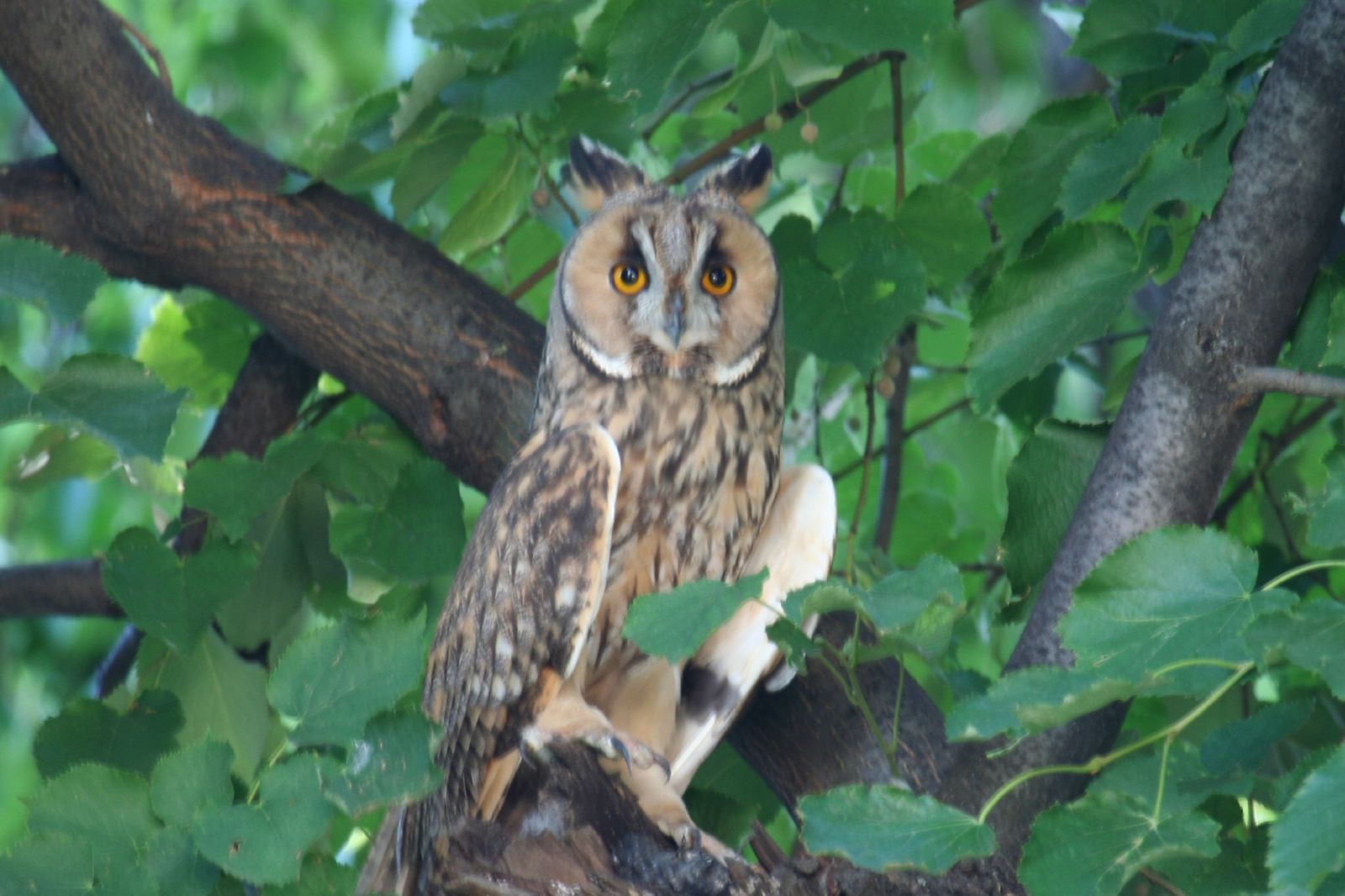Long-eared Owl
A species of Eared Owls, Also known as Lesser Horned Owl, Cat Owl Scientific name : Asio otus Genus : Eared Owls
Long-eared Owl, A species of Eared Owls
Also known as:
Lesser Horned Owl, Cat Owl
Botanical name: Asio otus
Genus: Eared Owls
 Photo By Alastair Rae , used under CC-BY-SA-2.0 /Cropped and compressed from original
Photo By Alastair Rae , used under CC-BY-SA-2.0 /Cropped and compressed from original Description
The long-eared Owl certainly lives up to its name. While its long, tufted ears give it a surprised expression it also helps improve its hearing. The hearing is so accurate, the owl can find and catch prey in complete darkness.
Size
33 - 41 cm
Life Expectancy
27 years
Nest Placement
Tree
Clutch Size
2 - 10 eggs
Number of Broods
25 - 30 days
Feeding Habits
Long-eared Owl primarily consume small mammals like voles and mice, hunting in open or sparsely forested areas. They opt for prey usually under 3.5 ounces, but also include small birds, and, rarely, bats, reptiles, amphibians, and fish. Mammals constitute 80-99% of their diet across their range.
Habitat
Long-eared Owl's are versatile birds found in a range of habitats including forests, grasslands, deserts, savannas, and marshes. They prefer areas that combine dense vegetation for roosting, such as willows, cottonwoods, and coniferous or deciduous woodlands, with nearby open spaces for foraging — be it shrublands, grasslands, or riparian zones. Long-eared Owl inhabit altitudes up to 6,500 feet, traversing temperate climates and adapting well to agricultural areas. They have shown particular affinity for nesting in brushy vegetation adjacent to open terrains.
Nest Behavior
Long-eared Owl do not construct their own nests but utilize pre-existing structures. They lay eggs in these appropriated nests, engaging in parental care post egg-laying, with the timing heavily influenced by local conditions.
Nest Characteristics
Long-eared Owl's nests are often in abandoned stick nests of birds like magpies or crows, or alternatively in tree cavities, cacti, cliff crevices, or on the ground. Typical nests are about 2.5 inches deep and 8.5 inches across, with no additional building by long-eared Owl.
Dite type
Carnivorous
People often ask
Migration Overview
Out of roughly 19 regular species of owl in North America and 13 regular species of owl in Europe, the long-eared owl is classed as one of the five in both continents to be truly migratory, moving annually in at least some areas and in some numbers from summer to winter grounds and back whether or not it is an irruptive year. Northern populations are migratory, showing a strong tendency to wander south in autumn. Some normally young bird from central Europe migrate southwest at distances of up to more than 2,000 km (1,200 mi). Central European adults are less migratory, at most merely wandering in winter. 
General Info
Feeding Habits
Bird food type
Bird Feeder Type

Platform
Behavior
Long-eared Owl exhibit a diverse behavioral repertoire, engaging in both solitary and communal activities. During hunts, they fly or hover low over open terrains, seizing small mammals with a lethal skull bite, often consuming prey entirely. Remarkably, they form loose nesting colonies, sometimes in proximity to other bird species. Post-breeding, long-eared Owl may roost in large aggregations of up to 100 individuals. Juvenile "branchers" demonstrate impressive mobility, navigating trees by leaping and utilizing wing and beak strength. Pair bonding typically commences in winter, often monogamous, with males executing complex calls and captivating aerial displays to attract mates.
Distribution Area
The long-eared owl has an extremely large distributional range. In Eurasia, they are distributed from the Iberian Peninsula and the British Isles (including almost the entirety of Ireland), in both of which they are found somewhat spottily but quite broadly, especially for an owl. From western France east through the remainder of Europe they are found nearly everywhere, though still usually quite common in these areas, there are small spots where they do not usually occur in Italy, Austria and Southeastern Europe. 
Species Status
Not globally threatened.